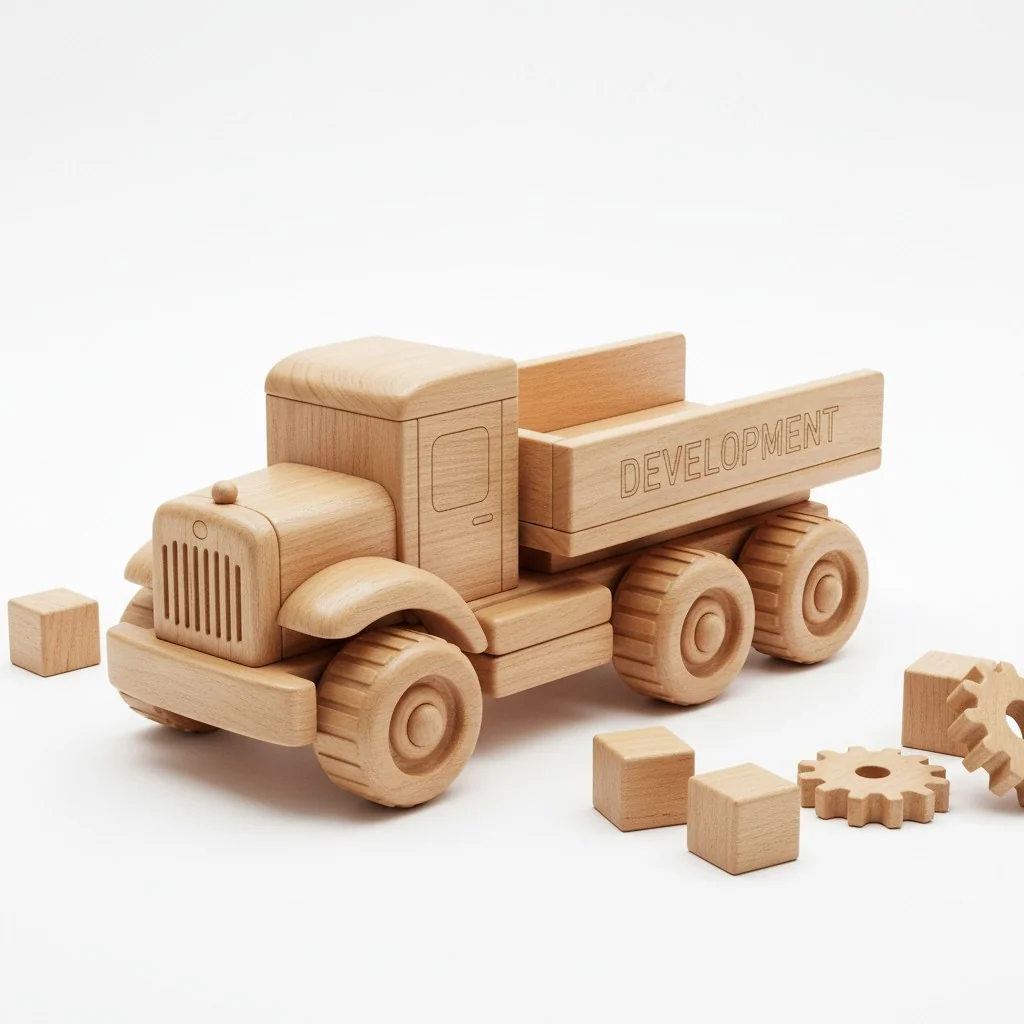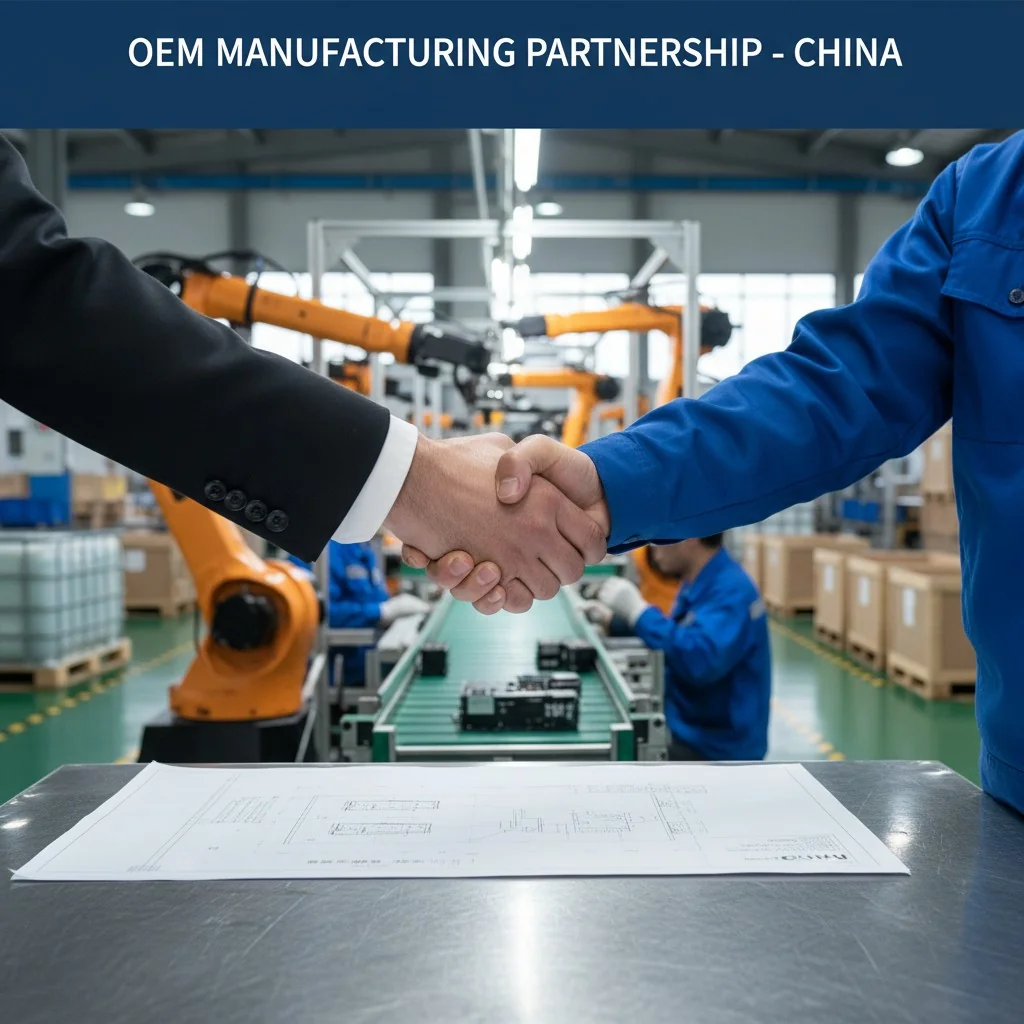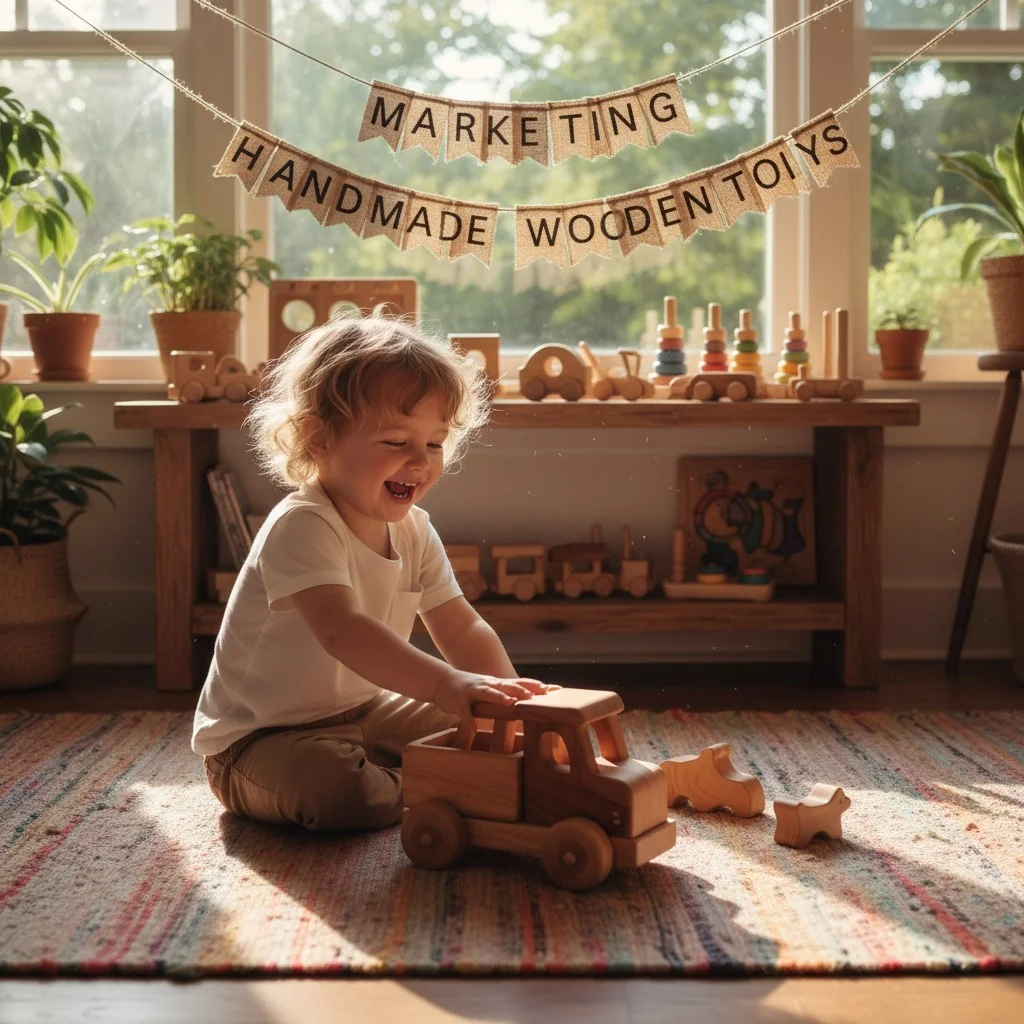You have a brilliant design for a wooden toy truck but feel lost. The path to manufacturing in China seems complex, and you fear your vision will be compromised.
The key is a structured process. You need a detailed technical package[^1], a carefully vetted OEM supplier, clear communication protocols, robust packaging, and a smart marketing strategy. This framework turns a complex challenge into a series of manageable steps, ensuring your design becomes a high-quality, successful product.
When I first started my trading company, I learned a valuable lesson. It doesn't matter if you're making a complex plastic mold or a simple wooden toy. The principles of good manufacturing are the same: clear specifications, strong partnerships, and attention to detail. Many designers get overwhelmed by the big picture. But if you break the process down, you can master it. Let's walk through the exact steps you need to take.
All wooden toys from China are made with low-quality, unsafe materials.False
This is a common misconception. While low-quality manufacturers exist, many reputable Chinese factories use high-quality, certified woods (like FSC-certified) and non-toxic, child-safe paints to meet strict international standards like EN-71 and ASTM F963.
A detailed 'tech pack' is crucial for minimizing errors when working with an OEM manufacturer.True
A comprehensive technical package acts as a universal language, providing precise instructions on dimensions, materials, colors, and assembly. It significantly reduces misunderstandings and ensures the final product matches your design intent.
How Do You Properly Develop Your Wooden Toy Truck Design for Manufacturing?
Your design idea is solid, but it's not ready for a factory yet. Without a detailed plan, manufacturers will make assumptions, leading to prototypes that miss the mark entirely.
You must create a comprehensive technical package, or "tech pack." This document should include detailed 2D and 3D CAD files, precise dimensions, material specifications (wood type, finish, paint), and a list of all safety standards[^2] your toy must meet, like ASTM F963 or EN-71.
Developing your design for manufacturing is all about removing guesswork. I've seen great ideas fail because the details weren't clear. Your first step is the tech pack. This is your product's blueprint.
Your Technical Blueprint
Think of the tech pack as your contract with the factory. It must include everything. I'm talking about 3D models (STEP/IGS files) and 2D drawings with every single dimension and tolerance. Specify the exact type of wood, the grain direction if it matters, and the finish. Is it raw, oiled, or painted? If painted, provide Pantone color codes.
Choosing the Right Materials
The wood you choose affects the toy's look, feel, durability, and cost. You need to specify this clearly. Beech is a great choice; it's hard, durable, and has a fine grain. Pine is cheaper but softer and can dent easily. Maple is another premium, durable option. I've put a simple comparison below.
| Wood Type | Durability | Cost | Grain |
|---|---|---|---|
| Beech | High | Mid | Fine |
| Pine | Low | Low | Coarse |
| Maple | High | High | Fine |
| Rubberwood | Mid | Low | Coarse |
Prototyping is Non-Negotiable
Never, ever go to mass production without approving a physical sample. This is your chance to hold the product, test its function, and check the quality. I always plan for at least two or three rounds of prototypes to get everything just right.
You can skip the prototyping stage to save time and money.False
Skipping prototypes is one of the most expensive mistakes you can make. A small investment in samples can save you from a large batch of unsellable products with critical design or quality flaws.
Specifying international safety standards like EN-71 in your tech pack is essential for selling toys in Europe.True
EN-71 is the European standard for toy safety. Manufacturers need to know this requirement from the start to use compliant materials and testing procedures, ensuring your product is legal and safe for the market.
How Do You Cooperate with a Chinese OEM Manufacturer for Your Wooden Toys?
You need to find a factory, but the options are overwhelming. Choosing the wrong partner can lead to poor quality, missed deadlines, and a lot of wasted money and stress.
Start on platforms like Alibaba but do your own homework. Check their business license[^3], certifications (FSC for wood, BSCI for social compliance), and ask for examples of similar toys they've made. Always communicate clearly and professionally, and formalize everything in an OEM agreement.
Finding the right Original Equipment Manufacturer (OEM) is about building a partnership. I've built my business on strong relationships with factories. It's not just about the lowest price.
Vetting Your Potential Partner
Don't just trust the profile on a sourcing website. You need to dig deeper. Ask for a copy of their business license and any quality or social audit reports like BSCI or Sedex. A good factory will be proud to share these. Ask them if they are familiar with the safety standards for your target market (e.g., Canada's CCPSA). I also recommend ordering a sample from 2-3 shortlisted factories to compare their quality and communication firsthand.
Communication is Everything
Miscommunication is the number one cause of production problems. Designate one point of contact at the factory. Use clear, simple English in your emails. Use lots of pictures and diagrams to explain things. I've found that a quick video call can often solve a problem faster than ten emails.
The OEM Agreement
Once you're happy with the prototype and ready to proceed, you need a formal agreement. This should cover:
- MOQ: Minimum Order Quantity
- Unit Price: And its validity period.
- Payment Terms: A common structure is 30% upfront and 70% after a passed pre-shipment inspection.
- Lead Time: For production.
- IP Protection: A clause stating that the design is your intellectual property.
The lowest price always indicates the best value from a manufacturer.False
The lowest price can often signal compromises in material quality, worker treatment, or quality control. A slightly higher price from a reputable, certified factory often provides better overall value and lower risk.
Requesting a factory's Business License and certifications like BSCI or FSC is a standard part of the vetting process.True
Legitimate and professional manufacturers expect potential clients to perform due diligence. Asking for these documents shows you are a serious buyer and helps you verify their legitimacy and commitment to quality and ethical standards.
What Is the Right Way to Pack Your Handmade Wooden Toy Trucks?
You've made a beautiful toy, but it arrives broken. Poor packaging can destroy your product and your brand's reputation before a customer even uses it.
Your packaging needs to achieve two goals: protection and presentation. Use sturdy, corrugated boxes for the product and a strong master carton for shipping. Inside, use inserts to prevent movement. The box design should also be attractive and include all required legal information and barcodes.
I've seen people spend a fortune on product development and then try to save a few cents on the box. It's a huge mistake. Packaging is part of the product experience.
Protection First
Your toy will travel thousands of miles. It will be dropped, stacked, and shaken. Your packaging must survive this.
- Retail Box: This is the box the customer sees. It should be made of a strong paperboard or thin corrugated cardboard.
- Inner Support: Use cardboard inserts or molded pulp trays to hold the truck securely in place. Avoid plastic if you can; it's better for your brand image.
- Master Carton: This is the big shipping box that holds multiple units. It should be a strong, double-walled corrugated box. Make sure there's not too much empty space.
Branding and Information
The box is a marketing tool. It's the first physical thing your customer touches. Use it to tell your brand's story. Show a picture of the toy. Highlight that it's made from natural wood. You also need to include practical information:
- Your brand name and logo
- Product name
- Country of origin ("Made in China")
- Any required safety warnings (e.g., "Choking Hazard: Small parts. Not for children under 3 years.")
- A UPC barcode for retail scanning.
Don't forget to ask your factory to perform a drop test on the packaged product to ensure it holds up.
Packaging is just a box to put the product in; design doesn't matter.False
Packaging is a critical part of the customer experience and brand perception. A well-designed package not only protects the product but also communicates brand value, enhances the 'unboxing' experience, and can be a key purchasing driver.
A 'master carton' is the large, outer box used to ship multiple individual product units together.True
This is correct terminology. Master cartons are essential for logistics, protecting the inner retail boxes during transit and making handling and inventory management more efficient for both the manufacturer and the retailer.
How Do You Effectively Market Your New Wooden Toy Trucks?
You have a warehouse full of amazing toys, but sales are slow. Without a clear marketing strategy[^4], even the best products will fail to find their customers.
Focus on telling your story visually. Use high-quality photos and videos on platforms like Instagram, Pinterest, and TikTok. Collaborate with parenting influencers who can showcase your toy to their audience. Selling directly through a Shopify store or Etsy can help you build a strong brand.
Making the product is only half the battle. Now you have to sell it. As a designer, you have an advantage because you understand the product's story better than anyone.
Build Your Digital Storefront
In today's world, you need an online presence. A simple Shopify store is a great place to start. It gives you full control over your brand and customer relationships. Take beautiful, well-lit photos of your toy truck. Show it from all angles. Even better, make short videos of a child playing with it. This helps parents imagine the toy in their own home.
Tell Your Story with Content
People who buy wooden toys are often interested in craftsmanship, sustainability, and imaginative play. Your marketing should reflect this.
- Social Media: Instagram and Pinterest are perfect for visual products like yours. Post behind-the-scenes content of the design process. Share photos from happy customers.
- Collaborations: Reach out to "mommy bloggers" or parenting influencers. Offer to send them a free toy in exchange for an honest review or a post. Their endorsement can be very powerful.
Reaching Your Audience
You need to get your content in front of the right people. You can use targeted ads on Facebook and Instagram to reach parents with specific interests, like "eco-friendly toys" or "Montessori." Building an email list from your website visitors is also a great way to announce new products and promotions directly to your most interested fans.
You need a multi-million dollar advertising budget to market a new toy successfully.False
While a large budget helps, it's not essential. Modern digital marketing allows for highly targeted, cost-effective campaigns. Influencer collaborations, organic social media, and content marketing can build a strong following with a modest budget.
High-quality photography and video are critical for marketing a physical product online.True
Since online shoppers cannot touch or feel the product, visual assets are their primary tool for evaluation. Clear, appealing photos and videos build trust, showcase quality, and help customers visualize the product in their lives, directly impacting sales.
Conclusion
Bringing a wooden toy from concept to customer is a detailed process. By mastering development, sourcing, packaging, and marketing, you can successfully turn your unique design into a thriving business.
References
[^1]: Understanding the technical package is crucial for ensuring your product meets design specifications and quality standards.
[^2]: Knowing safety standards like EN-71 and ASTM F963 is vital for compliance and ensuring child safety.
[^3]: Verifying a manufacturer's business license ensures legitimacy and compliance with regulations.
[^4]: A solid marketing strategy is essential for reaching your target audience and driving sales.






